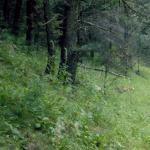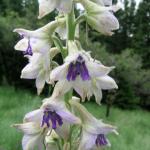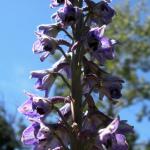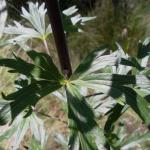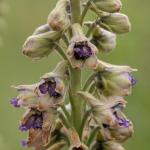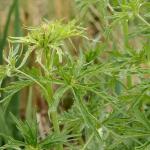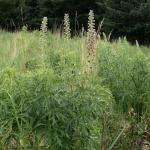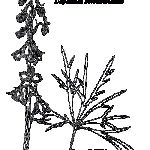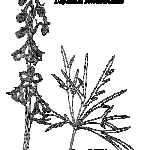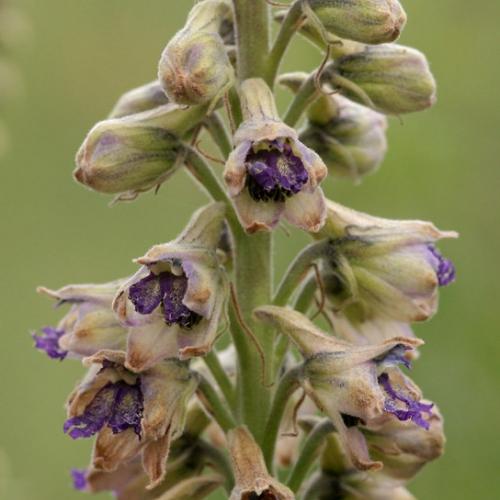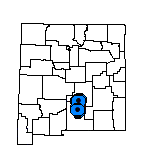Description
Perennial herb 0.9-2.5 m tall; stems glabrous, green or bluish-green at the base; leaves all on stem and withered from the basal 1/5 of the stem at the time of anthesis, petioles 3-13 cm long, blades 8-18 cm long and 5-10 cm wide, palmately divided into 5 main lobes, each lobe further dissected into additional lobes or teeth; inflorescence of racemes that are sometimes paniculately branched at the base in larger specimens, 20- to 140-flowered, branches and pedicels with short hairs; sepals ovate-acute, bluish-purple or lavender, becoming brownish with age, sparsely pubescent, lateral sepals forward pointing, 7-11 mm long, the upper sepal extended basally into a spur 7-11 mm long; petal blades hairy, cleft, 5-7 mm long. Flowers July to September.
Similar Species
This is the only tall larkspur in the Sacramento-White mountain range. Delphinium sapellonis is very similar, but occurs farther north. It has yellowish or brownish purple young flowers that are usually glandular and more densely hairy. Its lower stems are usually green or reddish, while those of Delphinium novomexicanum are often bluish-green.
Distribution
New Mexico, Lincoln and Otero counties, Sacramento and White mountains.
Habitat
Canyon bottoms, forest meadows and road banks in lower and upper montane coniferous forest; 2,200-3,400 m (7,200-11,200 ft).
Conservation Considerations
Fairly common within its range, but population sizes have never been assessed. Its response to forest fire and grazing have not been studied. Some species of Delphinium are poisonous to cattle, so the genus as a whole is sometimes targeted for poisonous weed control.
Important Literature
Warnock, M.J. 1997. Delphinium, pp. 196-240 In: Flora of North America Editorial Committee (eds.). Flora of North America, Magnoliophyta: Magnoliidae and Hamamelidae, Vol. 3. Oxford University Press, New York, New York.
Ewan, J. 1945. A synopsis of the North American species of Delphinium. University of Colorado Studies, Series D 2(2):55-244.
*Ivey, R.D. 1995. Flowering plants of New Mexico, 3rd edition. Published by the author, Albuquerque.

